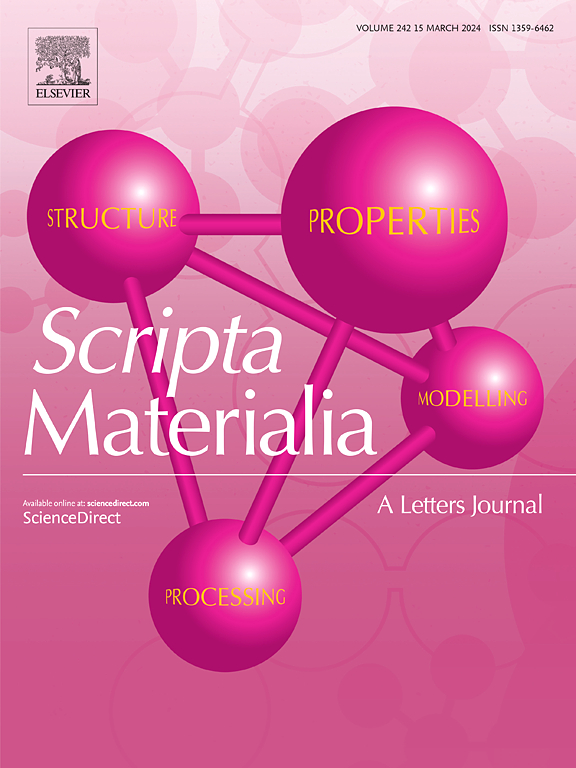自生分层润滑相在多主元素合金中具有优异的高温摩擦学性能
IF 5.3
2区 材料科学
Q2 MATERIALS SCIENCE, MULTIDISCIPLINARY
引用次数: 0
摘要
在保持抗氧化性的同时实现自适应润滑是高温摩擦学合金面临的关键挑战。本研究在铌改性的CoNiAl共晶多主元素合金中引入了一种新的分层润滑相,以提高高温摩擦学性能。在800℃时,conalnb合金的磨损率为1.01 × 10⁻5 mm3/N·m,这是由于形成了由Co3O4、NiO、AlNbO4和Al2O3组成的分层氧化层。第一性原理计算进一步揭示了分层氧化相的形成和润滑机制。具体来说,Al2O3中的强Al-O键形成了稳定的抗氧化基层,而AlNbO4中的中间Al-O和Nb-O键有助于平衡氧化保护和适度的剪切适应性。此外,Co3O4和NiO中较弱的Co-O和Ni-O键增强了自润滑性能。这些氧化物的协同效应,结合它们的分层特性,提出了一种通过成分设计来提高高温摩擦性能的新策略。本文章由计算机程序翻译,如有差异,请以英文原文为准。

Self-generating hierarchical lubricious phase for superior high-temperature tribological performance in multi-principal element alloys
Achieving adaptive lubrication while maintaining oxidation resistance is a key challenge in high-temperature tribological alloys. This study introduces a novel hierarchical lubricious phase in Nb-modified CoNiAl eutectic multi-principal element alloys to improve high-temperature tribological performance. The CoNiAlNb alloy exhibits a low wear rate of 1.01 × 10⁻5 mm3/N·m at 800 °C due to the formation of a hierarchical oxide layer, comprising Co3O4, NiO, AlNbO4, and Al2O3. First principles calculations further reveal the formation and lubrication mechanisms of the hierarchical oxide phases. Specifically, strong Al-O bonds in Al2O3 form a stable and oxidation-resistant basal layer, while intermediate Al–O and Nb–O bonds in AlNbO4 help a balance between oxidation protection and moderate shear adaptability. In addition, the weaker Co-O and Ni-O bonds in Co3O4 and NiO enhance self-lubrication properties. The synergistic effect of these oxides, combined with their hierarchical characteristics, presents a novel strategy for enhancing high-temperature friction performance through compositional design.
求助全文
通过发布文献求助,成功后即可免费获取论文全文。
去求助
来源期刊

Scripta Materialia
工程技术-材料科学:综合
CiteScore
11.40
自引率
5.00%
发文量
581
审稿时长
34 days
期刊介绍:
Scripta Materialia is a LETTERS journal of Acta Materialia, providing a forum for the rapid publication of short communications on the relationship between the structure and the properties of inorganic materials. The emphasis is on originality rather than incremental research. Short reports on the development of materials with novel or substantially improved properties are also welcomed. Emphasis is on either the functional or mechanical behavior of metals, ceramics and semiconductors at all length scales.
 求助内容:
求助内容: 应助结果提醒方式:
应助结果提醒方式:


